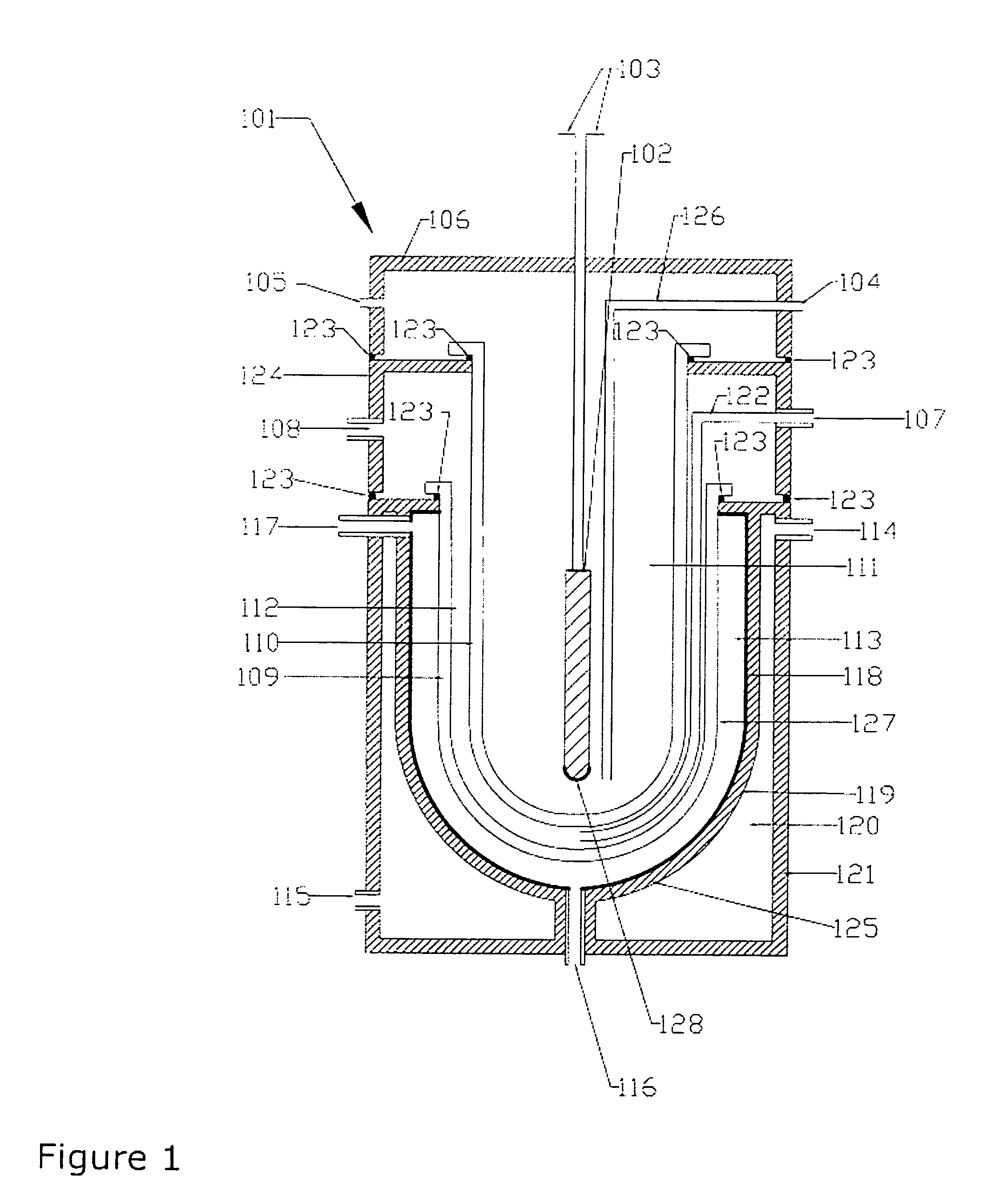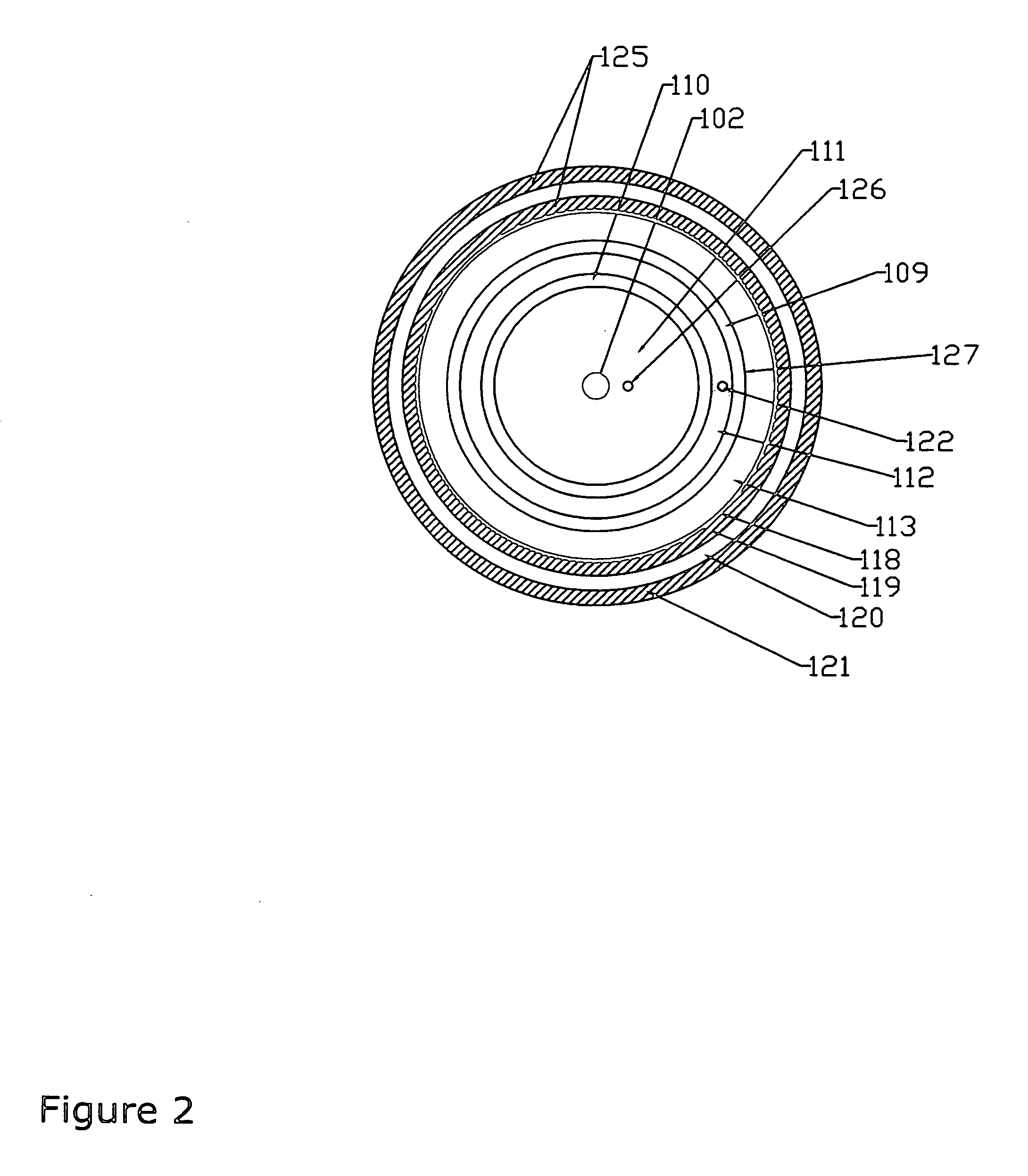Isomerisation of pharmaceutical intermediates
a technology intermediates, which is applied in the field of isomerisation of vitamin d analogues, can solve the problems of difficult scaling, if any, of photochemical conversions in general, and achieve the effects of reducing irradiation time, good yield and improving purity
- Summary
- Abstract
- Description
- Claims
- Application Information
AI Technical Summary
Benefits of technology
Problems solved by technology
Method used
Image
Examples
embodiments
[0023] A suitable photochemical reactor for the present invention may be any reactor usually used in photochemistry which is suitable or adapted for flow-through, e.g. continuous flow. Such reactors are well-known to a person skilled in the art of photochemistry and can for example be found in “Ullmann's Encyclopeia of Industrial Chemistry, Photochemistry, A19, pp. 576-582 and in Vol B4 page 116-120” or in “International Chemical Engineering, Vol 12, No. 1, 1972, pp. 131-143”. Examples of photoreactors include, but are not limited to a tubular reactor, a bubble column reactor, a stirred tank reactor, a falling film reactor, or a belt reactor, all of which may be adapted for flow-through or continuous flow. The reactor may be used in series or parallel including various combinations of different reactors. More generally a suitable flow-through photoreactor or continuous flow photoreactor reactor may include a reactor body that circumscribes a longitudinally extending channel having a...
example 1
Continuous Photoisomerisation Using a Flow-Through Photochemical Reactor
[0063] 7.5 kg of 1(S),3(R)-bis(tert-butyl-dimethylsilyloxy)-20(R)-(3′-cyclopropyl-3(S)′-hydroxyprop-1′(E)-phenyl)-9,10-secopregna-5(E),7(E),10(19)-triene (IIa: X=OR2, R1, R2=tert-butyldimethylsilyl, R3=hydrogen) which was prepared as described earlier by M. J. Calverley, Tetrahedron, Vol. 43, No. 20, pp. 4609-4619, 1987 or in WO 87 / 00834, and 45 g 9-acetylanthracene were dissolved in 150 l essentially oxygen free methyl-tert-butylether (MTBE) under a nitrogen atmosphere with stirring. The mixture was continuously pumped from a 180 l stirred batch reactor through a continuous flow photoreactor having the dimensions as described earlier in the specification comprising a medium pressure mercury lamp doped with iron (power input 6 kW, UVH5822F-1, power supply / ballast unit: 10 kW Heraeus) and back to the batch reactor (flow rate ca. 48 l / min). The temperature of the reaction mixture was kept at about 10° C. by cool...
example 2
[0064] 1(S),3(R)-bis(tert-butyl-dimethylsilyloxy)-20(R)-(3′-cyclopropyl-3(S)′-hydroxyprop-1′(E)-phenyl)-9,10-secopregna-5(Z),7(E),10(19)-triene (IIa: X=OR2, R1, R2=tert-butyldimethylsilyl, R3=hydrogen) obtained from Example 1 is deprotected using tetrabutyl ammonium fluoride in tetrahydrofuran at 60° C. followed by chromatography, as described earlier by M. J. Calverley, Tetrahedron, Vol. 43, No. 20, pp. 4609-4619, 1987 or in WO 87 / 00834. Crystallisation from ethylacetate / hexane containing a few drops of triethylamine gives calcipotriol in full accordance with the data described by M. J. Calverley in Tetrahedron, Vol. 43, No. 20, p. 4618, 1987 for compound 4.
PUM
| Property | Measurement | Unit |
|---|---|---|
| Temperature | aaaaa | aaaaa |
| Length | aaaaa | aaaaa |
| Length | aaaaa | aaaaa |
Abstract
Description
Claims
Application Information
 Login to View More
Login to View More - R&D
- Intellectual Property
- Life Sciences
- Materials
- Tech Scout
- Unparalleled Data Quality
- Higher Quality Content
- 60% Fewer Hallucinations
Browse by: Latest US Patents, China's latest patents, Technical Efficacy Thesaurus, Application Domain, Technology Topic, Popular Technical Reports.
© 2025 PatSnap. All rights reserved.Legal|Privacy policy|Modern Slavery Act Transparency Statement|Sitemap|About US| Contact US: help@patsnap.com



